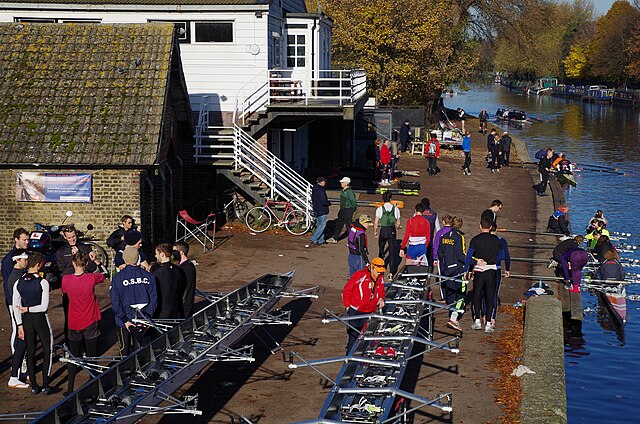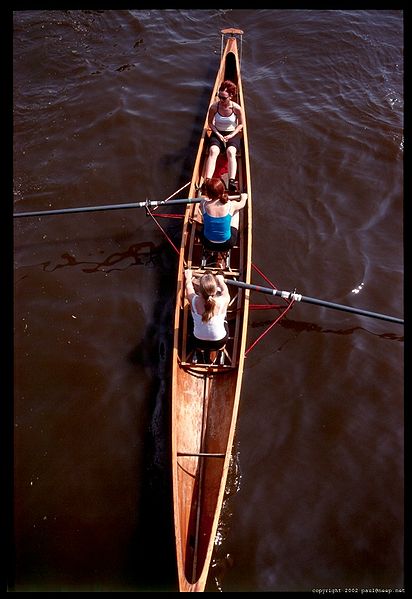In watercraft, a racing shell is an extremely narrow, and often comparatively long, rowing boat specifically designed for racing or exercise. It is equipped with long oars, outriggers to hold the oarlocks away from the boat, and sliding seats. The boat's long length and semicircular cross-section reduce drag to a minimum. This makes the boat both fast and unstable. It must be balanced by the rowers to avoid tipping. Being able to balance – or "set" – the boat while putting maximum effort into the oars is therefore an essential skill of sport rowing.
An eight
University of Vermont 8+ oar shell
Two hatchet sculls. The "blades" are at the top and the handles at the bottom of the picture.
Lea Rowing Club, a local club on the Lea Navigation in London.
Rowing is the act of propelling a human-powered watercraft using the sweeping motions of oars to displace water and generate reactional propulsion. Rowing is functionally similar to paddling, but rowing requires oars to be mechanically attached to the boat, and the rower drives the oar like a lever, exerting force in the same direction as the boat's travel; while paddles are completely hand-held and have no attachment to the boat, and are driven like a cantilever, exerting force opposite to the intended direction of the boat.
A rowing dinghy in use
Typical Finnish rowing boats on the shore of Palokkajärvi, Jyväskylä
Three members of a student rowing club in a coxed pair in the Amstel River
Woman rowing sampan with her feet in Ninh Bình Province of northern Vietnam








